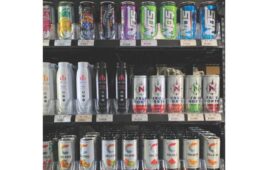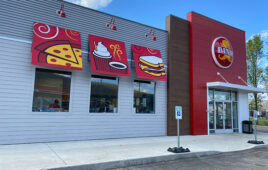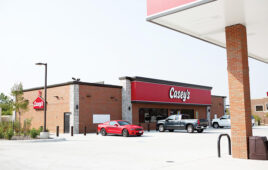 Evaluating potential new sites for the multi-unit operator can be a daunting task. The operator is constantly chasing several potential opportunities — whether through new builds or through acquisitions — only to have a few select sites come to fruition.
Evaluating potential new sites for the multi-unit operator can be a daunting task. The operator is constantly chasing several potential opportunities — whether through new builds or through acquisitions — only to have a few select sites come to fruition.
Complicating the site selection process is generally a lack of an evaluation tool that can be used for all departments that are a part of the decision-making process. This evaluation tool should address all the components of the site: location, build-out and remodel costs, landlord terms, a financial Proforma, etc., to provide a complete assessment of the property. Following are the key components to include in your real estate site evaluation form.
Step 1: Identify New Potential Site
First, you need to identify the site attributes. Where is it located? Who is the site owner? When does the lease begin and end? In addition, the real estate team should assess what classification the premises should be tagged — is it in a residential area? Industrial? Retail? The site attributes should also indicate the size of unit and the other tenants that are in the center (if applicable).

Step 2: Site Ride and Reviews
Next on the list should be an assessment of the demographics that make up the potential site. Determine what is the ethnicity mix for the unit. Also, based on the location and whether the demographics support a growing area, you should assign an overall grade to the viability of the unit.
Is it on a busy corner with easy access in a growing area? If so, that would be an “A” rating. A midblock location with access from a divided highway may garner a “B” or “C” rating. Lastly, most retailers have different tiers of their stores from basic to a flagship or premier location. Now would be a good time to label the anticipated unit here.
After the demographics and the site rating are complete, an overall evaluation of the general area should be completed. Assess the overall condition of the area and streets. Does the traffic flow freely? Is it walkable? What are the impediments to customers visiting the site? Overall, is the site accessible as well as visible? In addition, you should start thinking about the product mix based on the demographics as well.

Step 3: Preliminary Construction Costs
Now it is time to have the facilities team make their assessment. The team should be looking at all the costs for the build-out or remodel of the unit including permitting, design, construction, equipment and capital labor. At this point, the facilities team should have a ballpark number in hand to hand over to the operators so that they may build their Proforma model.
Armed with the capital costs to build the site, the operations team should plug its projections into the financial Proforma. Included, but not limited to, should be the following: sales revenue, expected gross margin, operating expenses, rent, other income and taxes.

Step 4: Estimated Site Economics
With that information as well as the expected build-out cost, the financial Proforma can be created, and the return-on-investment (ROI) can be determined. Most Proforma’s are projected to 10 or 15 years and the operations team can provide the annual escalators to their projections.
Step 5: Site and Floor Plans
To further explain the site, the following documents should be included in the real estate site selection package: Site plans, floor plans, elevations and pictures. Pictures should include street views, overhead images from Google Maps and street maps.
Step 6: LOI and Negotiation
Next, the real estate team should include the Letter-of-Intent (LOI) from the landlord for all to review if this is going to be a rental location. Included in an LOI should be the landlord information, the uses, the guarantors, restrictions, etc. In addition, the LOI should include items pertaining to the terms from the duration to the options and any out clauses. Next up, outline all the rents, PSF (per square foot), CAM (common area maintenance) charges and any other additional charges. Lastly, the LOI should include taxes, insurance, security deposits, broker fees and signatures.

Step 7: Sign Off
Once the evaluation site attributes are complete, the owners of each section review the overall document and determine to either go forward with a sign-off or kick it back to the team for further evaluation. This is the moment of truth for the site. The business owners of their respective areas must be aligned here for the site to move to the final approval stage.
Step 8: Final Approval
At this stage, the executive team either blesses or sends the site back for further evaluation. Generally, if the executive team has worked in tandem with the business leaders in identifying the attributes they are looking for in a new location, this approval process should be simple.
In summary, having structure around your site selection evaluation will streamline the process for all parties involved and enable an organization to move projects through the pipeline much faster (or eliminate potential sites quicker). When an organization is trying to grow — organically or through acquisition — it is prudent to have the necessary backup for each new site so that when you do a post-analysis in the future, you can refer to the documented decision-making process for each location.
 John Matthews, president and CEO of Gray Cat Enterprises Inc., is responsible for the management of all consulting activities for the firm, which include retail consulting for multiunit operations, interim executive management and project management. Prior to founding his own company in 2004, Matthews held senior management positions as president of Jimmy John’s Gourmet Sandwiches and as vice president of marketing, merchandising, facilities, corporate communication and real estate at Clark Retail Enterprises Inc. Additionally, Matthews worked for nine years in marketing management as the national marketing director of the Little Caesars Pizza Corp. He can be reached at [email protected].
John Matthews, president and CEO of Gray Cat Enterprises Inc., is responsible for the management of all consulting activities for the firm, which include retail consulting for multiunit operations, interim executive management and project management. Prior to founding his own company in 2004, Matthews held senior management positions as president of Jimmy John’s Gourmet Sandwiches and as vice president of marketing, merchandising, facilities, corporate communication and real estate at Clark Retail Enterprises Inc. Additionally, Matthews worked for nine years in marketing management as the national marketing director of the Little Caesars Pizza Corp. He can be reached at [email protected].




